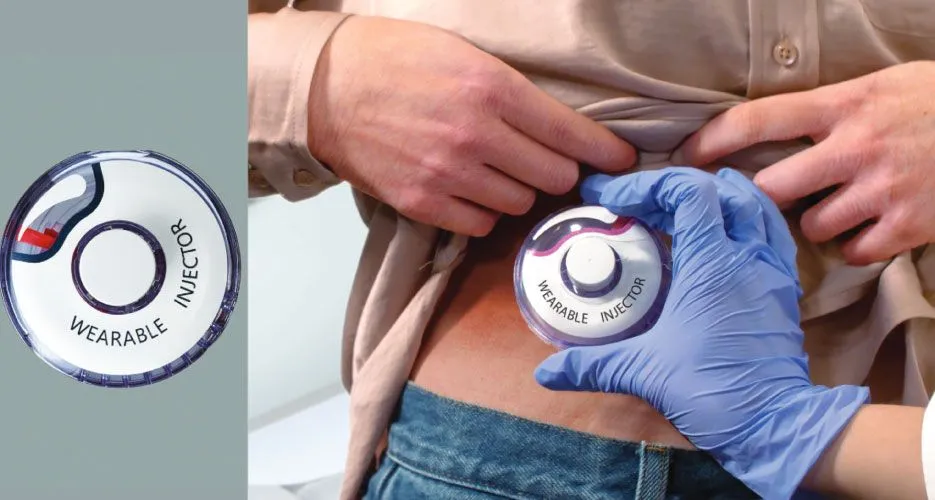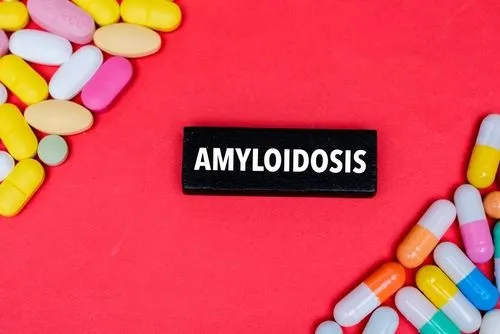IMW: Challenges Remain Despite Progress in Myeloma

“In the relapsed/refractory space, it’s never a zero-sum game. We need all hands to the pumps in terms of the drugs we have.”
Paul Richardson, Dana-Farber Cancer Institute
To realize comparable progress made for most myeloma patients over the past two decades, relapsed/refractory patients need newer therapies, more access to approved treatments, and better information about the proper timing, sequence, and combinations of lines of therapy. Yet it remains difficult for physicians to choose one treatment regimen over another.
“We have been very lucky, haven’t we, over the last ten-twenty years, to have a number of new drug approvals,” said Dr. Graham Jackson, a myeloma specialist from Newcastle, England, before noting declining rates in life expectancy, depth of response, and time-to-progression rates with each additional line of therapy. Evolving, resistant myeloma clones and their protective microenvironments also become stronger.
In a discussion at the biannual International Myeloma Workshop (IMW) meeting in Vienna, Austria, Dr. Jackson led a discussion about the immediate challenges treating physicians face treating relapsed/refractory myeloma.
“Increasing refractoriness is very important,” said Dr. Jackson, noting the presence of extramedullary and high-risk disease often complicate the decision-making process. Another new indication of better vs. poorer outcomes is whether a patient is clinical trial-eligible or not, with the former showing a survival benefit.
“We cannot afford to save our best options for later,” noted the Mayo Clinic’s Dr. Sikander Ailawadhi. Physicians also need to consider which therapy works best and longest; a standard therapy might be better tolerated and have longer efficacy over time, a novel drug may be better initially, but not be able to be used over time and vice versa.
He cited a number of challenges that physicians face when selecting therapy strategies for relapsed/refractory patients and warned them to be wary automatically applying clinical trial data to individual patients, especially if those patients are clinical-trial ineligible. Their real-world experience may differ from strict trial eligibility data and calls for the input of a specialist.
Experience is leading to the identification of new unmet needs such as finding a standard approach to treat extramedullary disease, non-secretors, and loss of BCMA as a target for therapy. Myeloma patients with cardiovascular disease and/or renal issues also seem to be a higher-risk group.
“Improvement in survival has not been evenly distributed across the different patient sub-populations and still there are still patients who do poorly,” according to Paula Rodriguez Otero from Spain’s University of Navarra as she noted the proliferation of backbone therapies in myeloma over the past two decades.
Dr. Rodriguez’s approach to relapsed/refractory myeloma starts with determining if a patient is refractory or not to lenalidomide. If not, the next step is to determine if the patient is refractory to CD 38 monoclonal antibodies like daratumumab, for which studies for both groups are ongoing.
The most challenging subpopulation is those who are lenalidomide refractory, as Dr. Rodriguez cited six major ongoing clinical trials looking into various treatment options into this group. Of particular attention to Dr. Rodriguez are ISS Stage 3 patients who have failed an autologous stem cell transplant (ASCT), citing both CAR T and bispecific trials as viable treatment options.
“We need new therapies, new targets, new mechanisms of action able to overcome resistance to conventional therapies,” said Dr. Rodriguez as she predicted that triple-class refractory patients will be offered novel therapies more quickly in the future.
“While we are making substantial progress, clearly there remains a lot to be done,” asserted Dr. Paul Richardson of the Dana Farber Cancer Institute, citing the complexity of the range of issues that come with a relapsed/refractory diagnosis.
“As we stand in 2021, we have a remarkable series of options for our patients,” said Dr. Richardson as he began his overview of various newly approved drugs as to how they apply to six patient categories for future research and treatment: triple, quad-, or penta-refractory; elderly and frail; renal dysfunction; bone marrow reserve; immune deficiency and infections; neuropathy.
The promising results of selinexor in elderly and frail patients, peptide drug conjugates like melflufen for patients with renal issues, CAR T in multi-refractory patients, and new drugs to target genetic causes of disease all point, according to Dr. Richardson, to promise but also complication as more experience is gained. All, however, show promise for relapsed/refractory patients.
In a group discussion following their presentations, Dr. Richardson stated a challenge for hard-to-treat patients who are eligible for CAR T therapy will need a “bridging” therapy, something he is confident will get better with experience. “As we start using CAR T in earlier lines of therapy, I think this particular challenge will be tackled a little easier, because they may not be refractory to so many agents,” added Dr. Ailawadhi.
During the audience question session, Dr. Sergio Giralt from Memorial Sloan Kettering Cancer Center reminded the audience of “what I consider one of the most unfortunately underutilized resources:” reserved frozen stem cells to treat cytopenia. He encouraged doctors to inform their patients of their options and patients suffering from cytopenia to ask if use of frozen cells might be helpful.
This session was one of a series of in-depth discussions about various myeloma issues sponsored by pharmaceutical and biotech companies, with Oncopeptides sponsoring this one. It is intended for health professionals only. Everything above is for informational purposes only for patients to help inform discussions with their treating physicians and nurses.
“In the relapsed/refractory space, it’s never a zero-sum game. We need all hands to the pumps in terms of the drugs we have.”
Paul Richardson, Dana-Farber Cancer Institute
To realize comparable progress made for most myeloma patients over the past two decades, relapsed/refractory patients need newer therapies, more access to approved treatments, and better information about the proper timing, sequence, and combinations of lines of therapy. Yet it remains difficult for physicians to choose one treatment regimen over another.
“We have been very lucky, haven’t we, over the last ten-twenty years, to have a number of new drug approvals,” said Dr. Graham Jackson, a myeloma specialist from Newcastle, England, before noting declining rates in life expectancy, depth of response, and time-to-progression rates with each additional line of therapy. Evolving, resistant myeloma clones and their protective microenvironments also become stronger.
In a discussion at the biannual International Myeloma Workshop (IMW) meeting in Vienna, Austria, Dr. Jackson led a discussion about the immediate challenges treating physicians face treating relapsed/refractory myeloma.
“Increasing refractoriness is very important,” said Dr. Jackson, noting the presence of extramedullary and high-risk disease often complicate the decision-making process. Another new indication of better vs. poorer outcomes is whether a patient is clinical trial-eligible or not, with the former showing a survival benefit.
“We cannot afford to save our best options for later,” noted the Mayo Clinic’s Dr. Sikander Ailawadhi. Physicians also need to consider which therapy works best and longest; a standard therapy might be better tolerated and have longer efficacy over time, a novel drug may be better initially, but not be able to be used over time and vice versa.
He cited a number of challenges that physicians face when selecting therapy strategies for relapsed/refractory patients and warned them to be wary automatically applying clinical trial data to individual patients, especially if those patients are clinical-trial ineligible. Their real-world experience may differ from strict trial eligibility data and calls for the input of a specialist.
Experience is leading to the identification of new unmet needs such as finding a standard approach to treat extramedullary disease, non-secretors, and loss of BCMA as a target for therapy. Myeloma patients with cardiovascular disease and/or renal issues also seem to be a higher-risk group.
“Improvement in survival has not been evenly distributed across the different patient sub-populations and still there are still patients who do poorly,” according to Paula Rodriguez Otero from Spain’s University of Navarra as she noted the proliferation of backbone therapies in myeloma over the past two decades.
Dr. Rodriguez’s approach to relapsed/refractory myeloma starts with determining if a patient is refractory or not to lenalidomide. If not, the next step is to determine if the patient is refractory to CD 38 monoclonal antibodies like daratumumab, for which studies for both groups are ongoing.
The most challenging subpopulation is those who are lenalidomide refractory, as Dr. Rodriguez cited six major ongoing clinical trials looking into various treatment options into this group. Of particular attention to Dr. Rodriguez are ISS Stage 3 patients who have failed an autologous stem cell transplant (ASCT), citing both CAR T and bispecific trials as viable treatment options.
“We need new therapies, new targets, new mechanisms of action able to overcome resistance to conventional therapies,” said Dr. Rodriguez as she predicted that triple-class refractory patients will be offered novel therapies more quickly in the future.
“While we are making substantial progress, clearly there remains a lot to be done,” asserted Dr. Paul Richardson of the Dana Farber Cancer Institute, citing the complexity of the range of issues that come with a relapsed/refractory diagnosis.
“As we stand in 2021, we have a remarkable series of options for our patients,” said Dr. Richardson as he began his overview of various newly approved drugs as to how they apply to six patient categories for future research and treatment: triple, quad-, or penta-refractory; elderly and frail; renal dysfunction; bone marrow reserve; immune deficiency and infections; neuropathy.
The promising results of selinexor in elderly and frail patients, peptide drug conjugates like melflufen for patients with renal issues, CAR T in multi-refractory patients, and new drugs to target genetic causes of disease all point, according to Dr. Richardson, to promise but also complication as more experience is gained. All, however, show promise for relapsed/refractory patients.
In a group discussion following their presentations, Dr. Richardson stated a challenge for hard-to-treat patients who are eligible for CAR T therapy will need a “bridging” therapy, something he is confident will get better with experience. “As we start using CAR T in earlier lines of therapy, I think this particular challenge will be tackled a little easier, because they may not be refractory to so many agents,” added Dr. Ailawadhi.
During the audience question session, Dr. Sergio Giralt from Memorial Sloan Kettering Cancer Center reminded the audience of “what I consider one of the most unfortunately underutilized resources:” reserved frozen stem cells to treat cytopenia. He encouraged doctors to inform their patients of their options and patients suffering from cytopenia to ask if use of frozen cells might be helpful.
This session was one of a series of in-depth discussions about various myeloma issues sponsored by pharmaceutical and biotech companies, with Oncopeptides sponsoring this one. It is intended for health professionals only. Everything above is for informational purposes only for patients to help inform discussions with their treating physicians and nurses.

about the author
Greg Brozeit
Greg Brozeit has been with the HealthTree Foundation since 2015 when he began volunteering for the Myeloma Crowd. Prior to that he worked with Dr. Bart Barlogie and the International Myeloma Foundation, inaugurating many myeloma patient advocacy and education programs.
More on Treatment Advances
Trending Articles
Upcoming Events




Get the Latest Multiple Myeloma Updates, Delivered to You.
By subscribing to the HealthTree newsletter, you'll receive the latest research, treatment updates, and expert insights to help you navigate your health.











